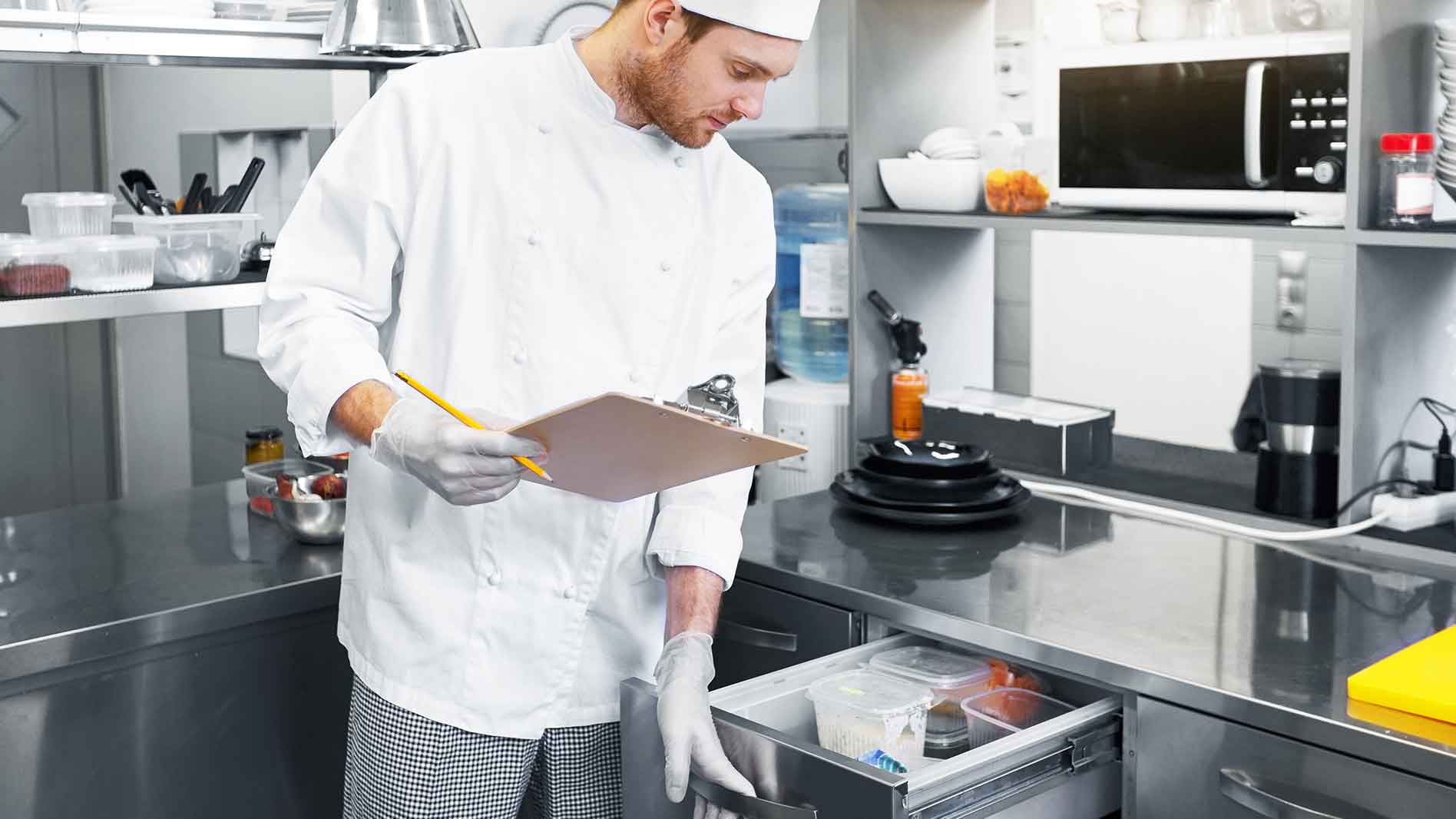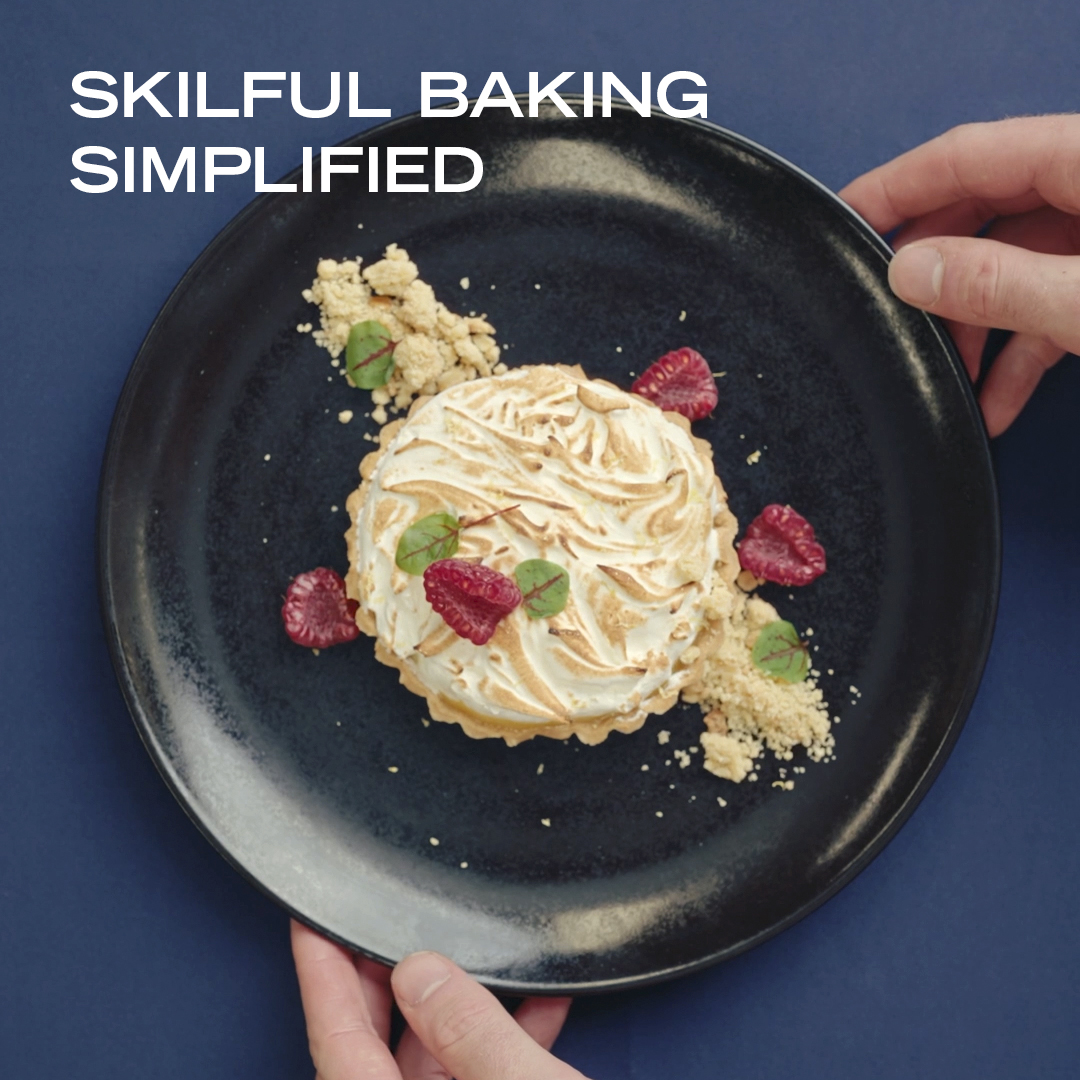Be inspired with recipes created by chefs.
Sign up for updates about products, special offers, news and promotional materials from Goodman Fielder.

Summary
Organisation is a fundamental component of today’s fast-paced kitchen environments. There’s an added emphasis on extracting every ounce of benefit we can to gain competitive advantage and effective kitchen storage solutions to drive additional efficiencies, save time and reduce wastage. So could you be doing more?
Every kitchen needs a sense of organisation when it comes to storing products and equipment. Without organisation, a commercial kitchen can quickly dissolve into chaos.
To ensure your staff are moving around the kitchen with ease, equipment and products need to be stored in a way that requires minimal movement and maximum convenience. From storing spices near stovetops to ensuring dry products are tightly sealed and stored in related groups; we unravel the top kitchen storage tips, tricks and advice to ensure your kitchen is set up to drive operational success.
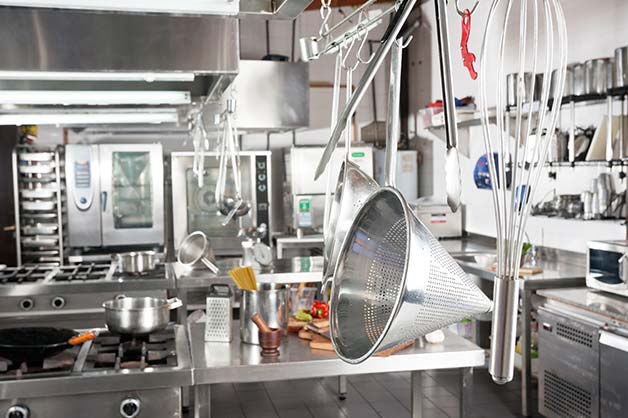
1) How and where to store your utensils:
Utensils are the arsenal every chef uses to fight their daily battles in the kitchen. As such they should be at arm’s length and readily available for whatever life in the kitchen throws your way. In any commercial environment everything you need, pots, pans, utensils, knives, etc, should be stored out and in the open. By doing this, you free up space in your cupboards and make the working hours more efficient.
As convenience continues to become a major priority, many kitchens are now hanging their pots and pans from walls and ceilings, while magnifying their stainless-steel stirrers, mixers and shifters to a wall magnet to free up bench space. While storing everything in reachable places ensures the kitchen runs smoother, making sure they’re facing down is also important as it lowers the chances of injuries and spreading of germs. “In a commercial setting, everything has to be stored handle up so you’re grabbing the handle, not the piece going in your soup,” Chef Suzanne Rockwell told a local blog.
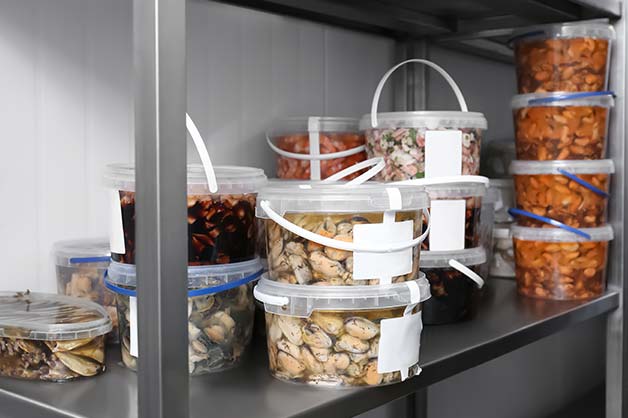
2) Best pantry containers for your goods:
Along with ensuring your utensils are properly stored, making sure your ingredients are all securely packaged and sealed is just as important. Chef Suzanne Rockwell advises chefs to keep products directly off the floor and use plastic containers and bins instead of the products material or cardboard packaging. “Whenever you have anything in a bag, always store it in a Ziploc bag,” she told a local blog, adding: “Don’t trust the twist tie.”
To stop food from spoiling and to increase its overall shelf life, empty them into airtight containers or bins that will protect them from air and moisture. As a cheap and simple option for your herbs, spices and seeds, store them in deli containers. Deli containers come in several sizes, are super cheap and can be stored on top of each other to free up additional space. For sauces, oils and other liquid products, you may have in your kitchen, transfer them into plastic squeeze bottles.
By doing this, it gives you a level of accuracy during cooking and plating, that of which a giant jug or bottle can’t. For your jams, biscuits, sweets and dips or any other products that can be served as is, transfer them from their plastic containers into preserve jars. Preserve jars keeps your food fresher for longer and can be stored at the front of house to influence customer’s decision making.
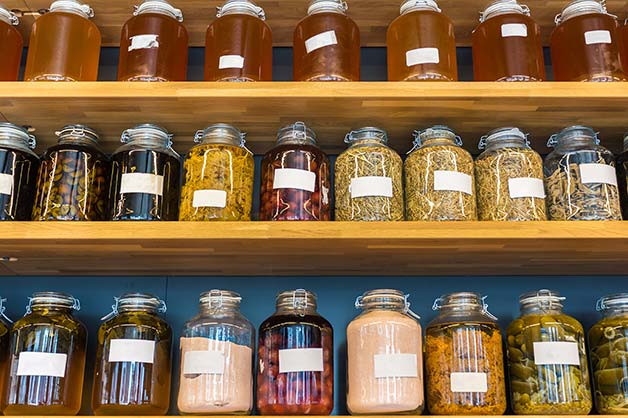
3) Label everything throughout your kitchen:
Guesswork in a kitchen is a fool’s errand. You should never have to guess what’s in the containers in your fridge, on the kitchen bench or in the storeroom. There is no time to stop and taste every ingredient that is being used by multiple people around the kitchen, so save yourself time and label its containers.
To ensure your labels are clear, use masking tape and a marker to label the items in your freezer, as well as your condiments and pantry staples. While this sounds like a simple and obvious tip, it is one that is certain to reduce wasted time and unsatisfied tastebuds with your customers.
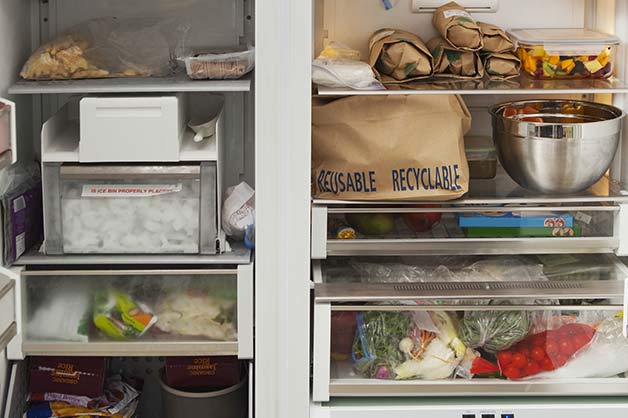
4) Implement FIFO in your pantry:
There is nothing worse than having to run around your kitchen during peak service, looking for ingredients to include in your dish. That’s why you should store foods and ingredients that are used for the same or similar purposes together.
For instance, flour, sugar and other baking supplies should be kept together, while plastic wraps, baking paper and foil should be stored in the same area and so on. And while keeping your items and products in categories is convenient, following the FIFO motto should also be implemented when deciding your groupings and storage options.
FIFO is the kitchen slang for ‘first in, first out rule’. Meaning, every time you receive new supplies, stock them behind your existing stock to make sure that older items are used first. By following this rule, it eliminates food wastage because it ensures you use the products that will spoil or expire first; saving you costs.
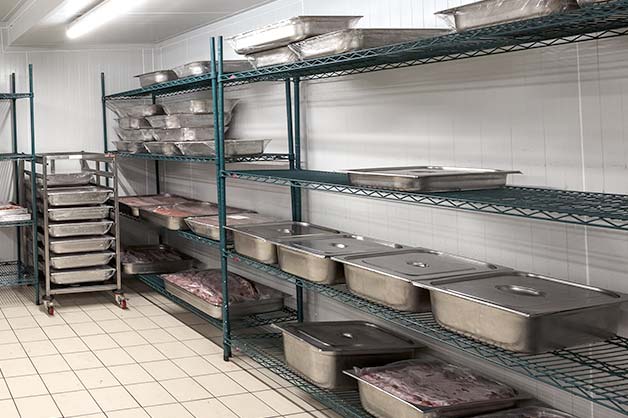
Conclusion:
If everything is in its proper place, cooking will be faster, easier, and more enjoyable. That’s why having proper storage solutions in place is important.
The more organised and structured your kitchen and its products are, the more productive your team can be and the better the end product of your dishes and the happier your customers. It’s a flow on effect that guarantees your venue a win-win-win situation.
